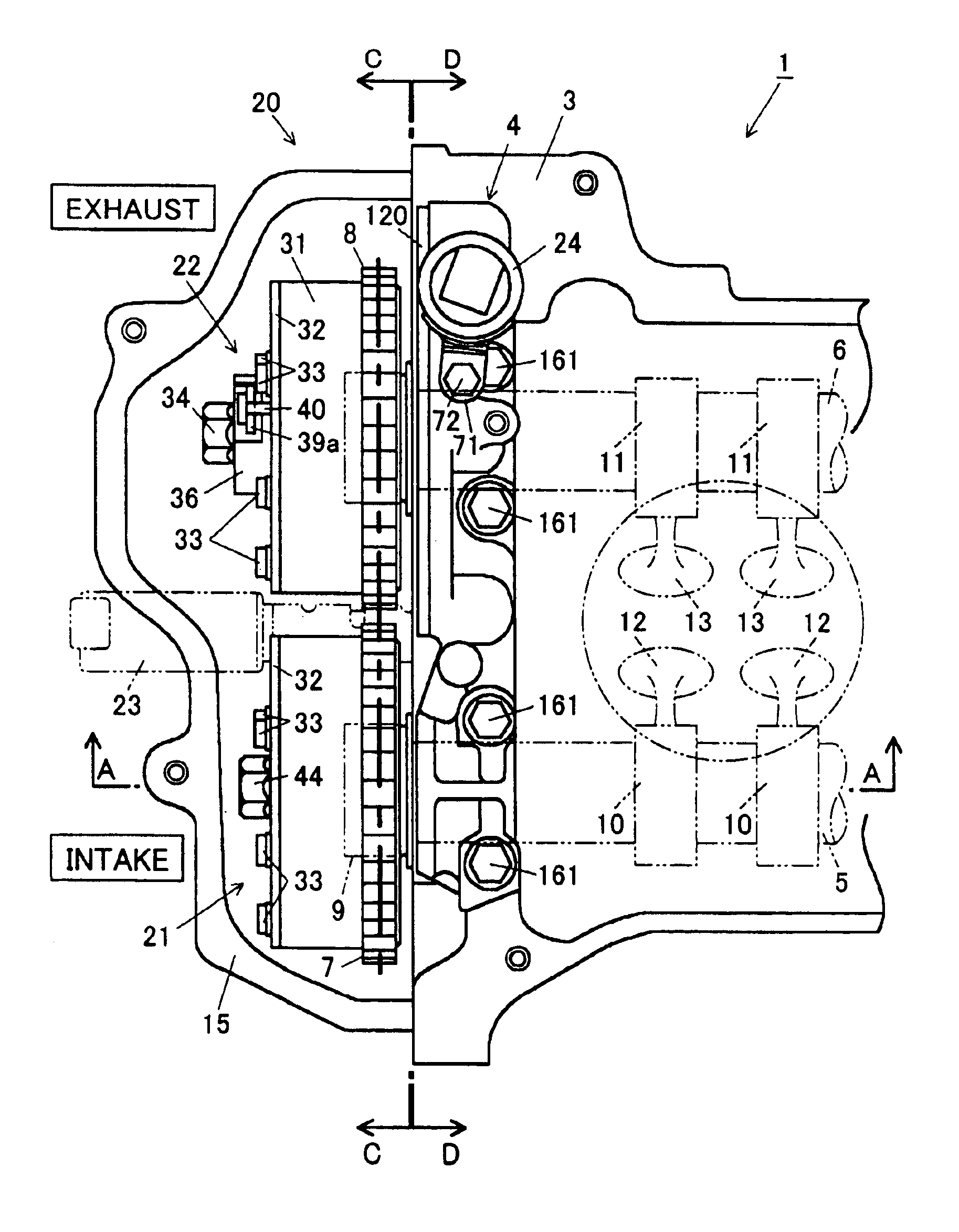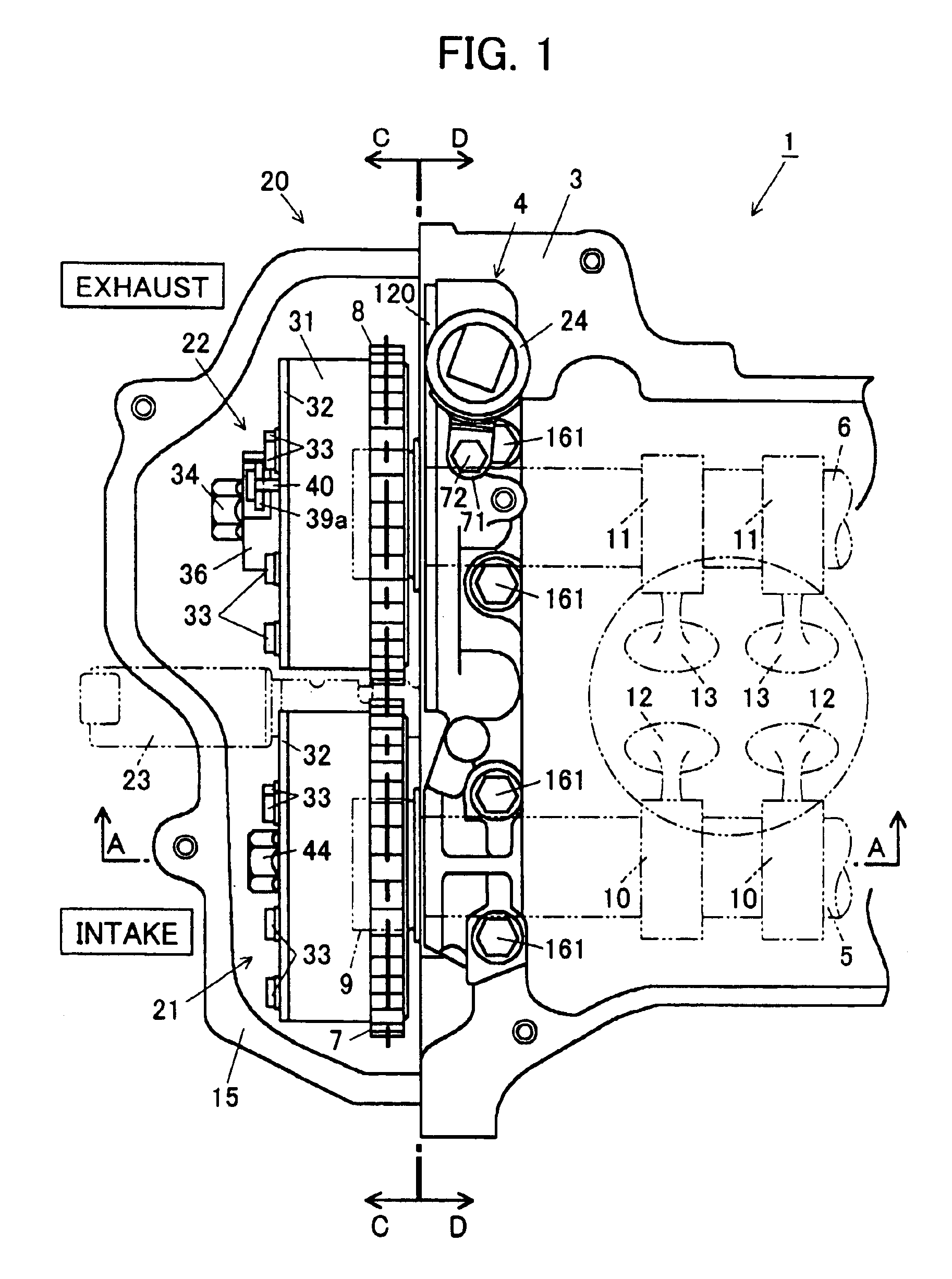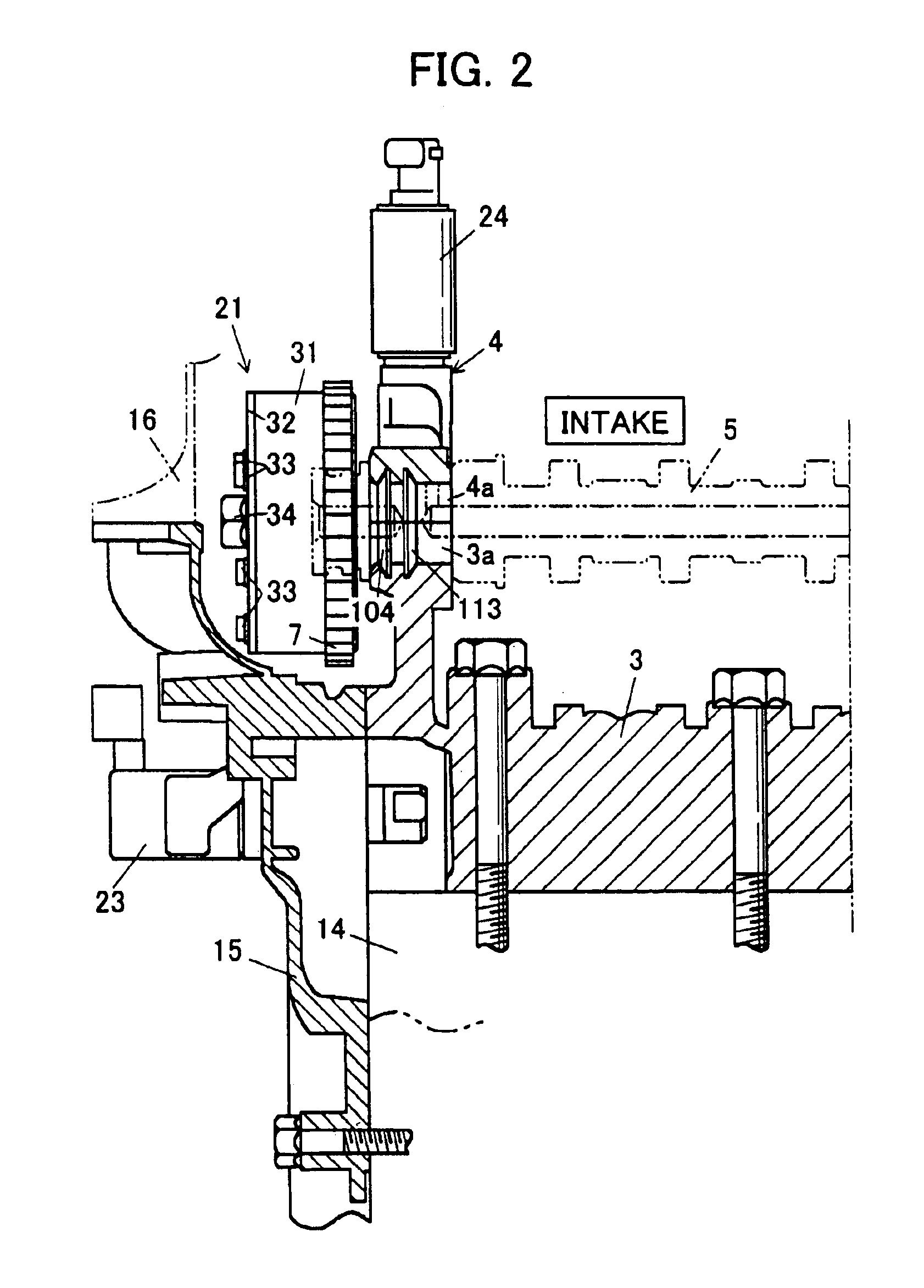Engine variable valve timing system
a timing system and variable valve technology, applied in the direction of valve arrangement, oscillating piston engine, machines/engines, etc., can solve the problems of delayed response in advance/retard control engine speed becoming unstable, etc., and achieves the effect of easy bled and easy bled
- Summary
- Abstract
- Description
- Claims
- Application Information
AI Technical Summary
Benefits of technology
Problems solved by technology
Method used
Image
Examples
Embodiment Construction
Preferred embodiments of the present invention will now be explained. As shown in FIGS. 1 and 2, an engine 1 is provided with an intake camshaft 5 and an exhaust camshaft 6 which are disposed parallel to a crankshaft (not shown but given the reference numeral 2) and rotatably supported by a cylinder head 3 and a cam cap 4. In the vicinity of the ends of these camshafts 5 and 6, sprockets 7 and 8 which are capable of relative rotation within a stipulated range are engaged to these camshafts 5 and 6 and also a chain 9 is wound around these sprockets 7 and 8 and a sprocket on the crankshaft 2 side. Moreover, with the rotation of the chain 9, the sprockets 7 and 8 and the camshafts 5 and 6 rotate via the chain 9, and thereby, via a plurality of cams 10 and 11 (see FIG. 1) secured to each of the camshafts 5 and 6, a plurality of intake valves 12 and exhaust valves 13 are driven to open and close.
Here, as shown in FIG. 2, mounted to the cylinder block 14 and end surface of the cam cap 4 o...
PUM
 Login to View More
Login to View More Abstract
Description
Claims
Application Information
 Login to View More
Login to View More - R&D
- Intellectual Property
- Life Sciences
- Materials
- Tech Scout
- Unparalleled Data Quality
- Higher Quality Content
- 60% Fewer Hallucinations
Browse by: Latest US Patents, China's latest patents, Technical Efficacy Thesaurus, Application Domain, Technology Topic, Popular Technical Reports.
© 2025 PatSnap. All rights reserved.Legal|Privacy policy|Modern Slavery Act Transparency Statement|Sitemap|About US| Contact US: help@patsnap.com



